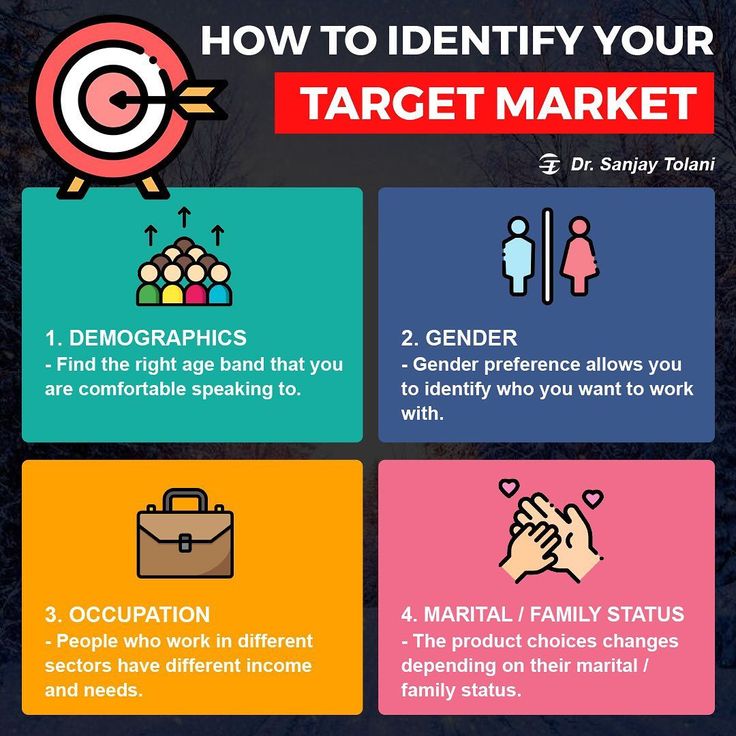
Define Target Audience A Comprehensive Guide
Define target audience is crucial for any successful marketing strategy. Understanding your ideal customer—their needs, motivations, and behaviors—is the key to tailoring your message and reaching them effectively. This guide dives deep into the process, from identifying your target audience to segmenting them, analyzing their needs, and ultimately adapting your marketing strategies for maximum impact.
We’ll explore various methods for defining your target audience, including market research techniques, and discuss the importance of understanding their demographics, psychographics, behaviors, and needs. We’ll also look at how to segment your audience and create compelling customer personas. Finally, we’ll examine how to use this knowledge to adapt your marketing strategies, choose the right channels, and measure your success.
Defining the Target Audience

Understanding your target audience is crucial for any successful business or marketing campaign. It’s not just about knowing who your potential customers are, but deeply understanding their needs, motivations, and behaviors. This knowledge allows you to tailor your offerings, marketing messages, and overall strategy to resonate effectively with your ideal customer, leading to increased engagement and conversions.A well-defined target audience allows businesses to allocate resources efficiently, focus marketing efforts on the most promising segments, and ultimately optimize their return on investment.
This clarity provides a roadmap for product development, pricing strategies, and communication channels, ensuring alignment with the specific desires and expectations of the individuals you’re trying to reach.
Methods for Identifying a Target Audience
Effective target audience identification involves a multifaceted approach. It’s not a one-size-fits-all process; rather, it requires in-depth research and analysis to gain a comprehensive understanding of your ideal customer.
- Market Research Techniques:
- Surveys:
- Surveys provide a structured way to gather data about your potential customers’ preferences, needs, and pain points. Well-designed questionnaires can uncover valuable insights into their behaviors, demographics, and psychographics. A crucial aspect of effective surveys is the careful selection of questions to ensure accurate and comprehensive responses. For example, asking specific questions about purchasing habits, preferred platforms, and the reasons behind their choices can provide a rich understanding of your potential clients.
- Focus Groups:
- Focus groups provide valuable insights into the motivations and attitudes of your target audience. These interactive sessions allow you to gather in-depth information about their perceptions and opinions on your products or services. Focus groups help in understanding the underlying reasons behind their choices and can identify potential areas for improvement. The dynamic nature of focus groups allows for open discussion and exploration of nuances that might not emerge in a survey.
- Competitive Analysis:
- Examining your competitors’ target audiences provides a valuable benchmark for understanding market segments. By identifying the characteristics of their customers, you can assess where your brand might fit and how you can differentiate your offerings. Analyzing competitor strategies reveals potential market gaps and areas where you can potentially gain an advantage.
Understanding Target Audience Needs, Motivations, and Pain Points
Knowing your target audience’s needs, motivations, and pain points is essential for developing effective marketing strategies. This knowledge empowers you to craft messages that resonate with their desires and address their specific concerns.
- Needs:
- Identifying the problems your product or service solves is fundamental. This involves understanding what pain points your target audience faces and how your offering alleviates them. For example, a fitness app might address the need for convenience and motivation in achieving fitness goals.
- Motivations:
- Understanding the drivers behind your target audience’s purchasing decisions is vital. This involves delving into their values, aspirations, and what motivates them to seek out solutions. For example, a sustainable clothing brand might appeal to customers motivated by environmental concerns and ethical production.
- Pain Points:
- Pinpointing the challenges and frustrations your target audience experiences related to a specific problem is essential. This allows you to highlight how your product or service effectively addresses those pain points and offers a solution. For instance, a financial planning app might address the pain point of managing complex finances effectively and affordably.
Key Characteristics of a Well-Defined Target Audience
Defining a target audience involves examining key characteristics that shape their behavior and preferences. This multifaceted approach enables you to create tailored marketing strategies and tailor your offerings to specific customer segments.
| Characteristic | Description | Example | Importance |
|---|---|---|---|
| Demographics | Age, gender, location, income, occupation | 25-35 year-old females, living in urban areas, with a household income of $60,000+ | Understanding the general profile helps in tailoring marketing efforts |
| Psychographics | Lifestyle, values, interests, personality traits | Passionate about sustainability, enjoys outdoor activities, values community engagement | Provides insight into consumer preferences and decision-making processes |
| Behaviors | Purchasing habits, media consumption, online activity | Regularly shops online, follows specific brands on social media, active on specific forums | Helps in optimizing marketing channels and messaging |
| Needs | What problems does the product or service solve? | Looking for a reliable and affordable transportation solution | Essential for tailoring messaging and product features |
Segmenting the Target Audience

Understanding your target audience is crucial for any successful business. But simply identifying who your customers are isn’t enough. To truly maximize your marketing efforts and tailor your offerings, you need to segment your audience into distinct groups. This allows for more targeted messaging, improved product development, and ultimately, increased sales and customer satisfaction.
Segmentation involves dividing your target audience into smaller, more manageable groups based on shared characteristics. This approach allows you to personalize your marketing efforts and create more effective campaigns by focusing on specific needs and desires within each group.
Methods for Segmenting a Target Audience
Several methods exist for segmenting your target audience, each with its own strengths and weaknesses. Choosing the right approach depends heavily on your specific business goals and the characteristics of your target market.
- Geographic Segmentation: This method groups customers based on their physical location. This could include city, state, region, or even specific neighborhoods. For example, a local bakery might target residents within a 5-mile radius for their promotional efforts.
- Demographic Segmentation: This method categorizes customers based on measurable factors like age, gender, income, education, and occupation. A company selling luxury cars might focus on high-income individuals aged 45-65.
- Psychographic Segmentation: This approach dives deeper into customers’ lifestyles, values, interests, and personality traits. A company selling organic food products might target environmentally conscious individuals who value health and wellness.
- Behavioral Segmentation: This method focuses on customer behavior, such as purchasing habits, brand loyalty, usage frequency, and product preferences. A company selling beauty products might target frequent online shoppers who are loyal to their brand.
Comparing Segmentation Approaches
Different segmentation methods provide various levels of detail and insight. A comprehensive understanding requires analyzing the strengths and weaknesses of each approach in relation to your business needs.
| Segmentation Variable | Description | Example | Advantages | Disadvantages |
|---|---|---|---|---|
| Geographic | Location-based categorization | Targeting customers in the New York metropolitan area | Allows for tailored advertising and product distribution | May overlook important factors like customer preferences |
| Demographic | Categorization based on measurable factors | Focusing on young adults (18-35) with a specific income range | Easy to implement and track | May not capture deeper motivations or lifestyle choices |
| Psychographic | Categorization based on lifestyle, values, and personality | Targeting environmentally conscious consumers who value sustainability | Allows for highly targeted marketing campaigns | Can be challenging to measure and quantify |
| Behavioral | Categorization based on purchasing habits and usage patterns | Targeting frequent online shoppers who actively use social media | Provides insights into customer behavior | May not capture all aspects of consumer psychology |
Creating Customer Personas for Each Segment
After segmenting your audience, create detailed customer personas for each group. A persona is a fictional representation of a typical customer within a specific segment. This helps in visualizing your target audience and tailoring your marketing and product strategies accordingly.
Each persona should include relevant details like demographics, psychographics, and behavioral traits. For example, a persona for a “frequent online shopper” might include details about their age, income, preferred online platforms, and typical purchasing behaviors.
Analyzing Target Audience Needs and Behaviors
Understanding your target audience goes beyond demographics. It’s about diving deep into their needs, motivations, and behaviors to craft truly effective marketing strategies. This involves recognizing their pain points, anticipating their desires, and ultimately, creating products and experiences that resonate with them on a profound level. Knowing what drives your audience empowers you to tailor your message, product, and service offerings for optimal impact.Understanding your target audience’s needs is crucial for success.
It’s not enough to simply know who they are; you need to understand what drives them, what problems they face, and what solutions they seek. This insight fuels targeted marketing campaigns that connect with your audience on an emotional level, fostering loyalty and driving conversions.
Defining your target audience is key for any marketing strategy, especially when considering SMS marketing. Understanding who you’re trying to reach is crucial to crafting effective campaigns. This includes factors like demographics, interests, and needs. To effectively use SMS marketing, consider how your messaging can resonate with your specific target audience. Knowing your audience allows you to craft relevant messages that will convert.
Ultimately, defining your target audience remains paramount for any successful marketing campaign, whether you’re using SMS marketing or another method.
Significance of Understanding Target Audience Needs
Understanding target audience needs isn’t just a nice-to-have; it’s a necessity for effective marketing. By recognizing their desires and motivations, you can craft products and services that genuinely meet their needs, resulting in increased customer satisfaction, loyalty, and advocacy. This deeper understanding leads to more effective communication, ultimately driving sales and fostering a stronger brand image.
Methods for Analyzing Consumer Behaviors
Several methods can be employed to analyze consumer behavior. Qualitative research, such as focus groups and interviews, offers valuable insights into the underlying reasons behind consumer choices. Quantitative methods, including surveys and A/B testing, provide measurable data on consumer preferences and purchasing patterns. By combining these approaches, a comprehensive understanding of consumer behavior can be achieved. This allows for more accurate predictions and the ability to adapt strategies in real time.
Gathering Insights into Customer Pain Points and Motivations
To truly understand your target audience, delve into their pain points and motivations. Conduct thorough research to identify the specific challenges they face and the factors that influence their purchasing decisions. This could involve online surveys, feedback forms, and social media monitoring. Analyzing customer reviews and testimonials can also offer crucial insights into their experiences and unmet needs.
Understanding their motivations helps to tailor your messaging and product development to resonate with their desires and values.
Prioritizing Customer Needs Based on Impact and Feasibility, Define target audience
Prioritizing customer needs is critical. A method for doing so is to assess the impact and feasibility of addressing each need. Needs with high impact and high feasibility should be prioritized. This approach ensures that resources are allocated effectively to the areas that will yield the greatest return. For instance, addressing a frequently reported pain point that significantly impacts a large portion of the customer base is more impactful and feasible than addressing a less prevalent concern.
Sources for Gathering Data on Target Audience Needs and Behaviors
Numerous sources provide valuable data on target audience needs and behaviors. Market research reports, industry publications, and social media analytics tools can provide valuable insights. Customer relationship management (CRM) systems and website analytics offer a wealth of information about customer interactions and preferences. Finally, direct interaction with your customers through surveys, feedback forms, and focus groups allows you to gain valuable first-hand knowledge.
Adapting Marketing Strategies Based on Target Audience
Understanding your target audience is crucial for effective marketing. Knowing their needs, preferences, and behaviors allows you to tailor your strategies to resonate with them, increasing engagement and ultimately driving conversions. This involves more than just broad demographics; it’s about diving deep into their motivations and desires.Adapting marketing strategies is an iterative process. Initial strategies may need adjustments based on performance data and ongoing feedback.
This iterative approach allows for continuous improvement and optimization, ensuring that your marketing efforts are as effective as possible. By closely monitoring key metrics and analyzing customer feedback, you can identify areas for improvement and refine your approach to better meet the needs of your target audience.
Defining your target audience is crucial for any successful marketing strategy. Understanding who you’re trying to reach helps tailor your messaging and efforts for maximum impact. A marketing launch strategist like Audria Richmond can help you pinpoint the specific demographics, interests, and pain points of your ideal customers, leading to a more focused and effective approach.
This, in turn, ultimately ensures your marketing efforts resonate with the right people and drive better results.
Tailoring Marketing Messaging
Crafting compelling messages is key to connecting with your target audience. Understanding their pain points, aspirations, and values allows you to communicate in a way that resonates deeply. Instead of generic marketing copy, tailor your language, tone, and style to speak directly to their specific needs. For example, if your target audience is environmentally conscious, your messaging should reflect this concern, highlighting sustainable practices and eco-friendly products.
Defining your target audience is crucial for any marketing strategy. Understanding who you’re trying to reach helps you tailor your message and optimize your campaigns. This includes looking at detailed data, like using the Facebook Offline Conversions API complete guide facebook offline conversions api complete guide to track real-world actions and conversions. Ultimately, a clear understanding of your target audience ensures your marketing efforts are as effective as possible.
Choosing the Right Marketing Channels
Selecting the most effective marketing channels is crucial for maximizing your reach and impact. Different channels cater to different audience segments. Consider the demographics, psychographics, and online behaviors of your target audience when deciding which platforms to use. A comprehensive approach that integrates multiple channels can offer the best results.
Marketing Channel Suitability
Different channels excel at connecting with various target audiences. The effectiveness of a channel depends on the specific needs and preferences of the group you’re targeting.
Measuring and Evaluating Target Audience Effectiveness: Define Target Audience
Knowing your target audience is crucial, but understandinghow* effective your efforts are in reaching and engaging them is equally vital. This step allows you to refine your approach, optimize your marketing spend, and ultimately achieve better results. Effective measurement goes beyond simple impressions; it delves into meaningful engagement and conversion metrics.Accurate evaluation helps identify what resonates with your audience and what doesn’t.
This allows you to adapt your strategy and messaging for maximum impact. By analyzing data, you can pinpoint areas for improvement and ensure your marketing efforts are aligned with the needs and desires of your target audience.
Metrics for Evaluating Target Audience Identification
Understanding the effectiveness of your target audience identification hinges on quantifiable metrics. These metrics provide a clear picture of how well you’ve defined and segmented your audience. Crucial metrics include the accuracy of your segmentation criteria, the representativeness of the identified segments, and the overlap between them. For instance, if a segment is overly broad or contains significant overlap with other segments, it indicates a need for further refinement in your criteria.
Tracking Key Performance Indicators (KPIs) for Target Audience Engagement
Tracking KPIs related to target audience engagement provides valuable insights into their interactions with your marketing materials. These metrics reveal which aspects of your campaign resonate most strongly with your target audience. Key KPIs to monitor include website traffic from targeted channels, click-through rates on ads, engagement rates on social media, and conversion rates for specific calls to action.
For example, if your social media posts are receiving minimal engagement from a particular segment, it suggests a need to adjust your content strategy to better align with their interests.
Analyzing Campaign Performance Across Target Audience Segments
A comprehensive analysis of campaign performance should consider the performance of your marketing efforts across different target audience segments. This allows you to see which segments respond best to various marketing tactics. Using a segmented approach to analyze campaign performance enables a tailored strategy for each audience group. This might involve evaluating metrics like conversion rates, cost per acquisition, and customer lifetime value for each segment.
For instance, if a specific segment consistently generates higher conversion rates through a particular marketing channel, it suggests that this channel and approach are highly effective for that segment and should be prioritized.
Adjusting Marketing Strategies Based on Evaluation Results
Adjusting marketing strategies based on evaluation results is essential for optimizing campaign performance. This involves refining your targeting, messaging, and channels to improve engagement and conversions. Data-driven adjustments are key. For instance, if a specific segment isn’t responding well to a particular advertising campaign, you might need to adjust the ad copy or consider alternative channels that resonate better with that segment.
This data-driven approach is essential to optimize marketing spend and maximize ROI. By iteratively refining your approach based on the evaluation results, you can continually improve the effectiveness of your marketing campaigns.
End of Discussion
In conclusion, defining your target audience is an essential step in any successful marketing campaign. By thoroughly understanding your ideal customer, you can tailor your message and choose the most effective channels to reach them. This detailed guide has equipped you with the tools and knowledge to effectively identify, segment, and analyze your target audience, ultimately leading to a more impactful and profitable marketing strategy.
Remember, ongoing analysis and adaptation are crucial for maintaining relevance and maximizing your ROI.





